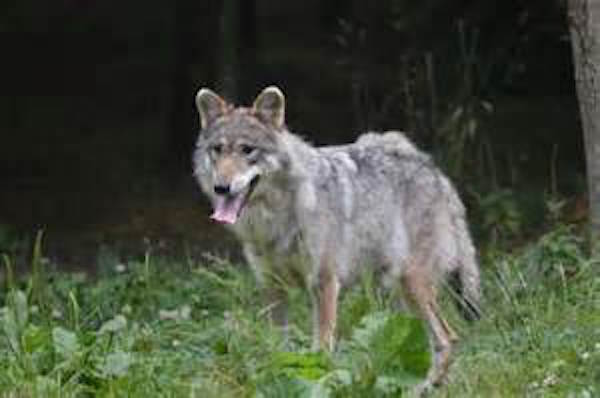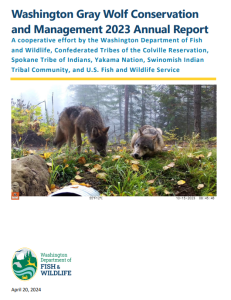
By Dave Workman
Editor-in-Chief
Washington’s gray wolf population is reportedly on the upswing, opening the possibility for the state Fish & Wildlife Commission to take a significant vote “downlisting” the species from, “endangered” to “sensitive,” according to a report at Axios.
A new report from the Department of Fish and Wildlife says the wolf population has “rebounded since 2008” when a resident pack was documented in Okanogan County, the state’s largest county in the north-central part of Washington. Currently, the WDFW estimates the Evergreen State wolf population is somewhere over 260 as of last year.
This does not translate to a situation where wolves may be hunted, but it does open the door for improvements in management, Axios reported. This includes “lower penalties for wolf poaching and make it easier for livestock owners to access permits to kill wolves that threaten herds as there is renewed scrutiny of the population and its impacts on the ecosystem,” the story said.

According to the WDFW report published in April, the Wolf Conservation and Management Plan divided the state into four recovery regions: Eastern Washington, the Northern Cascades, the Southern Cascades and Northwest Coast. The report lists several bullet points, including:
- The state’s minimum year-end wolf population increased again for the 15th year in a row. As of Dec. 31, 2023, WDFW and Tribes counted 260 wolves (20% increase) in 42 packs in Washington State. Twenty-five of these packs were successful breeding pairs. These numbers compare with the previous year’s count of 216 wolves in 37 packs and 26 breeding pairs. As in past years, survey results represent minimum counts of wolves in the state due to the difficulty of accounting for every animal – especially lone wolves without a pack.
- Since the first WDFW survey in 2008, the state’s wolf population has grown by an average of 23% per year.
- Pack sizes (number of individuals in a pack) ranged from two to eleven wolves. Most packs contained four to six individuals.
- State, federal, and tribal biologists captured 33 wolves from 22 different packs and monitored a total of 52 unique radio-collared wolves from 25 different packs and 3 single wolf territories in 2023.
- Six new packs formed or reestablished in 2023 including Beaver Creek pack in Okanogan County, the Skookum pack in Pend Oreille County, Ruby pack in Stevens County and the Dollar Mountain, Nason, and Scatter packs in Ferry County that overlap portions of the Confederated Tribes of the Colville Reservation (CTCR).
- Each year’s population total reflects population losses and population gains. WDFW documented 36 wolf mortalities during 2023 (Table 1), including two removed by the Department in response to wolf-livestock conflict, five killed by vehicles, one killed caught in the act of depredating on livestock, one of natural causes (killed by a cougar), one unknown, 22 legally harvested by tribal hunters (CTCR hunters), and four mortalities from unlawful take still under investigation.
- During calendar year 2023, WDFW spent a total of $1,611,412 on wolf management activities, including $84,686 for Damage Prevention Cooperative Agreements for Livestock (DPCAL), $164,102 for Contracted Range Riders, $28,596 for livestock loss claims, $31,602 for lethal removal operations in response to depredations on livestock, and $1,302,426 for wolf management and research activities.
While wolves have been delisted by the U.S. Fish & Wildlife Service in the far eastern part of the state, wolves are still fully protected by state law. Tribal hunters have killed some wolves, but there is no hunting open to other state residents.
The WDFW report notes, “Packs range across public and private land in Ferry, Stevens, and Pend Oreille counties in the northeast corner of the state and Asotin, Garfield, Columbia, and Walla Walla counties in southeast Washington, and increasing numbers are present in Okanogan, Chelan, and Kittitas counties in the Northern Cascades Recovery area. Although the first pack to recolonize the South Cascades and Northwest Coast recovery region only had one wolf during the year end counts in 2023, we have observed multiple collared wolves cross I-90 in the last year, which likely means it is only a matter of time before new packs begin to establish in that recovery region.”
Many Washington hunters are not thrilled with the expanding wolf population, or the emphasis on “recovery” at the expense of deer and elk herds, and the potential for reduction of opportunity for sportsmen and women.



